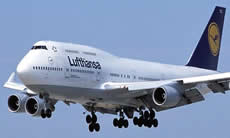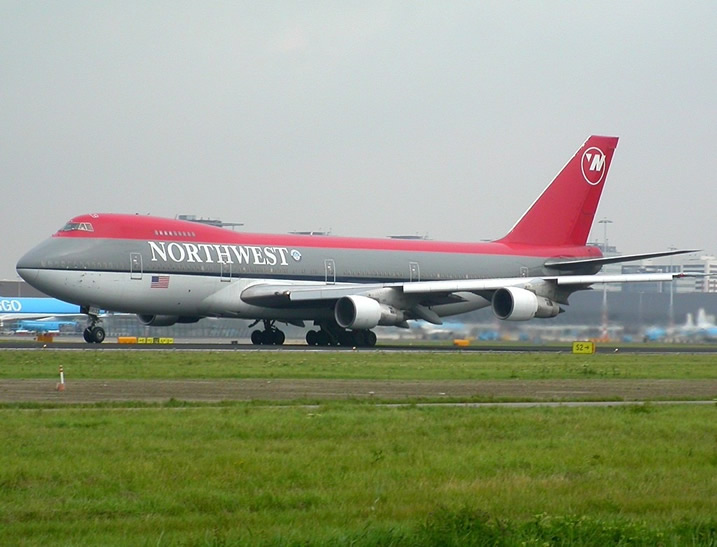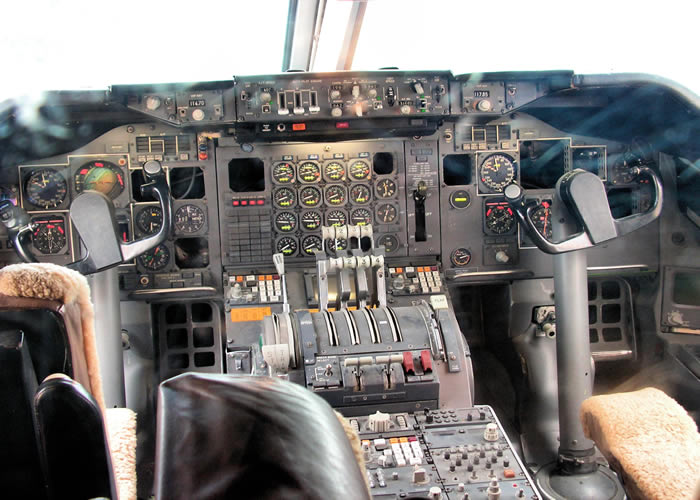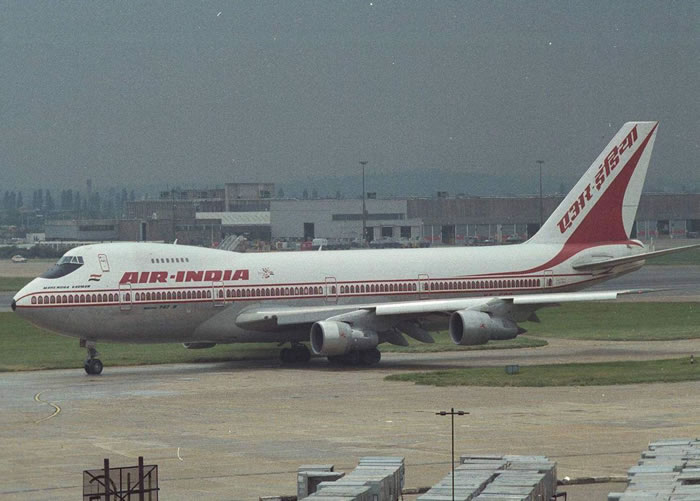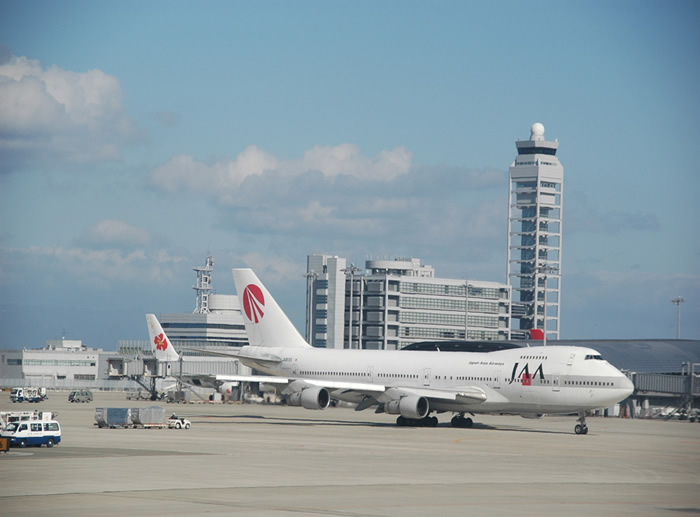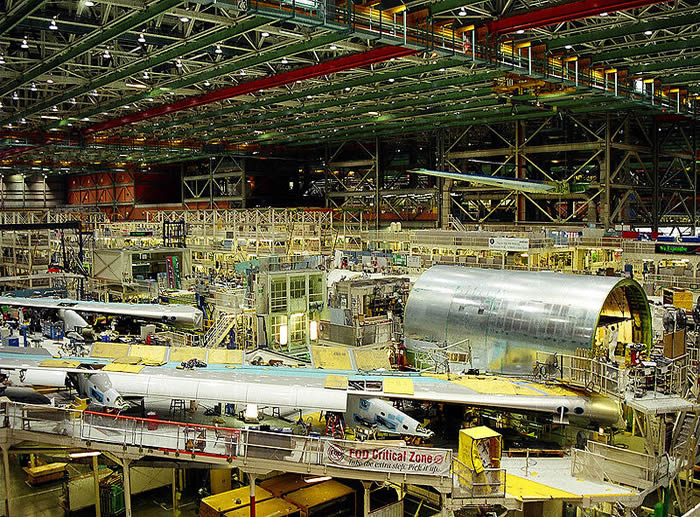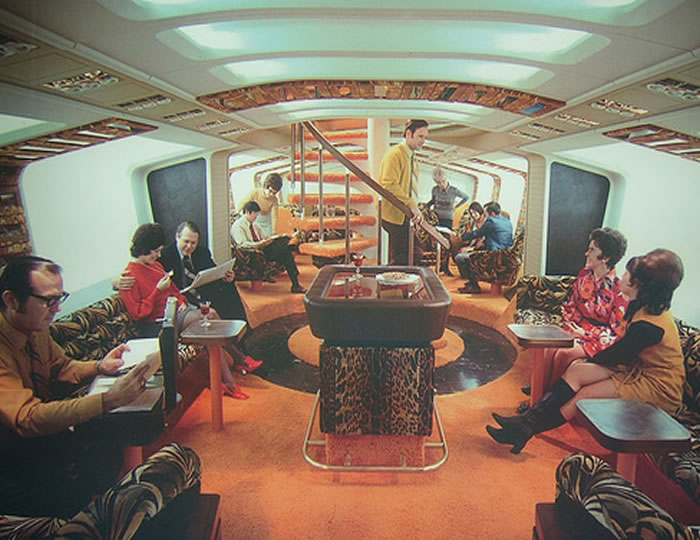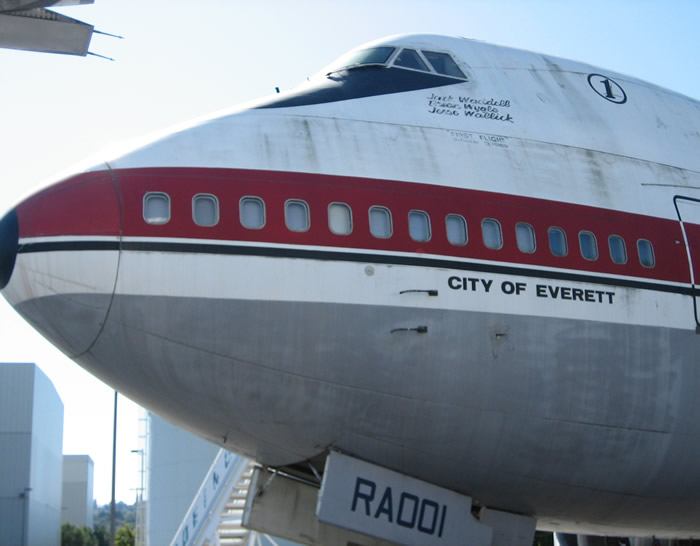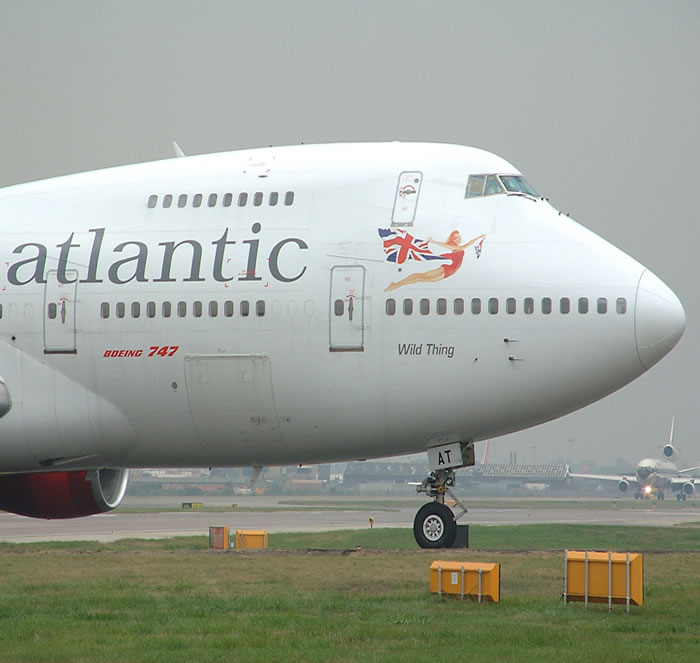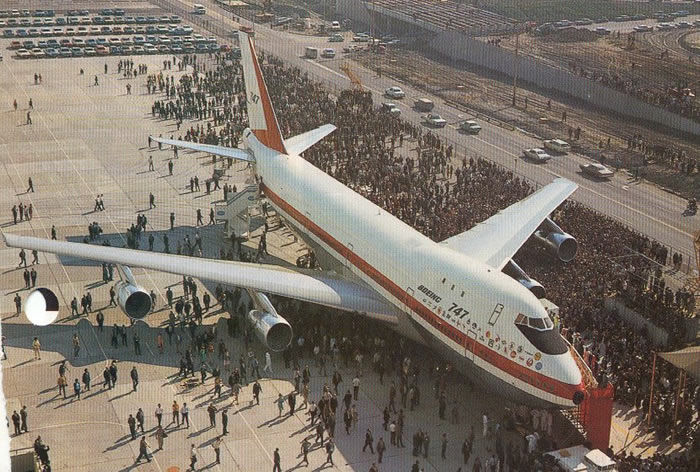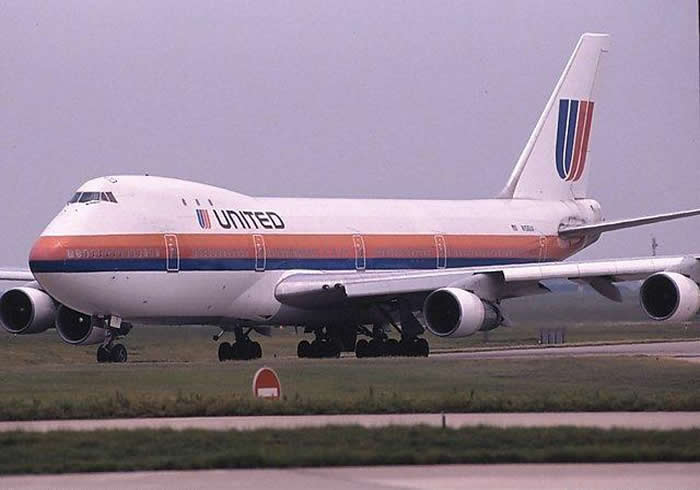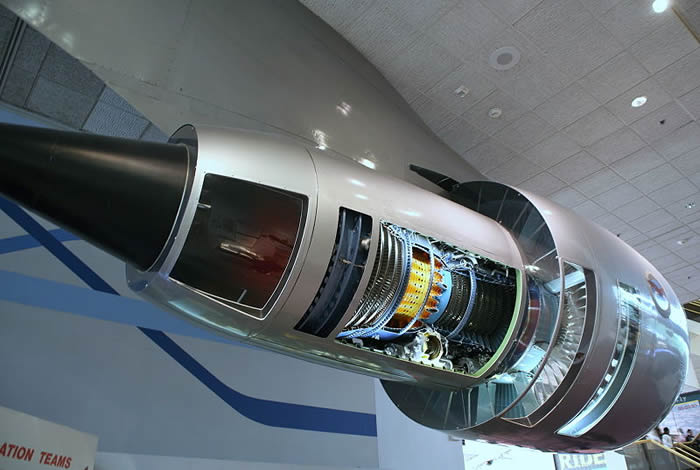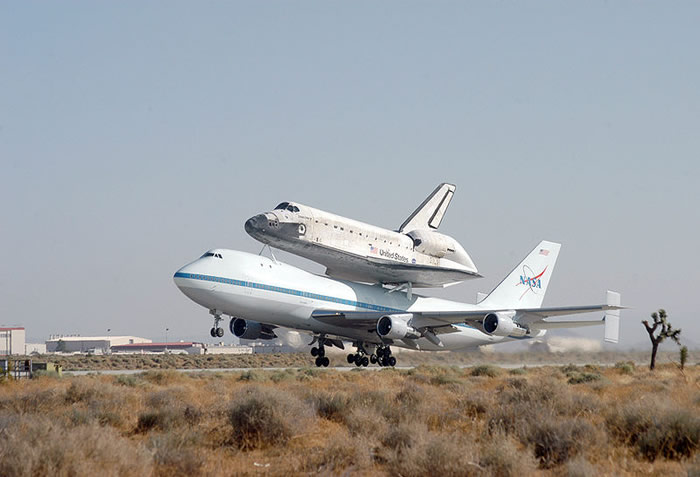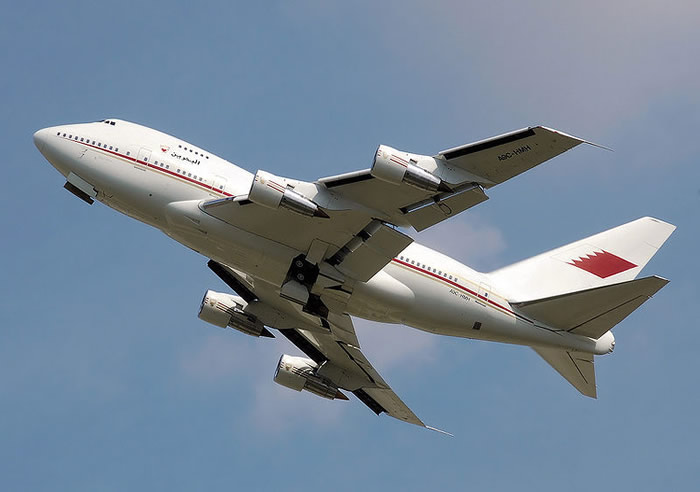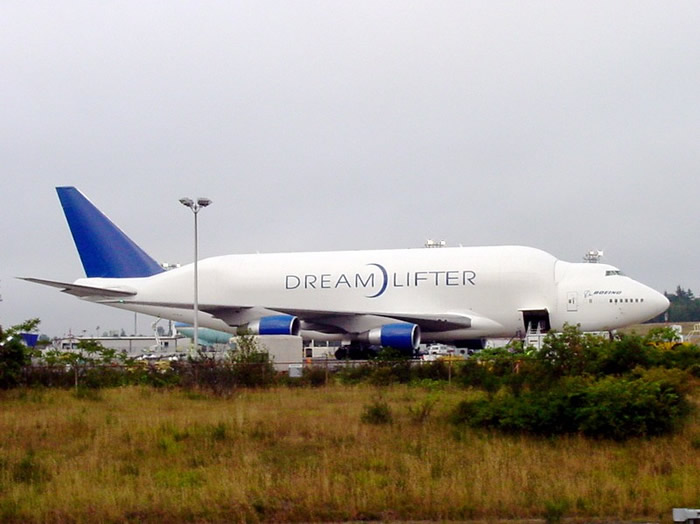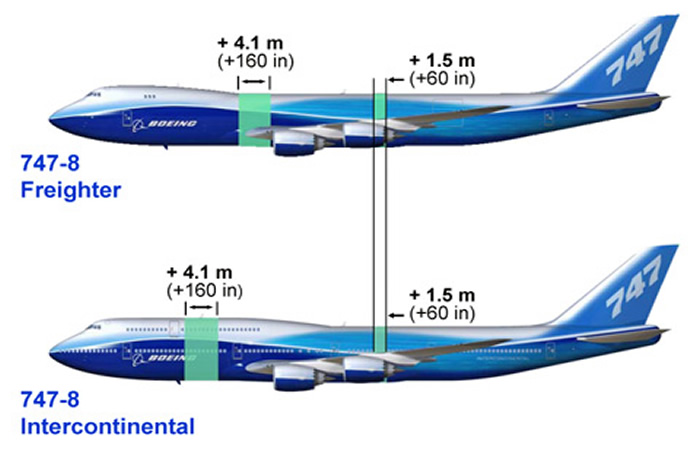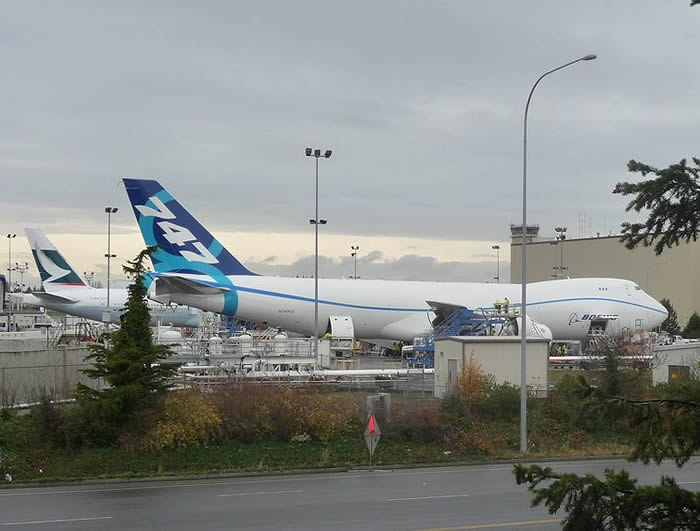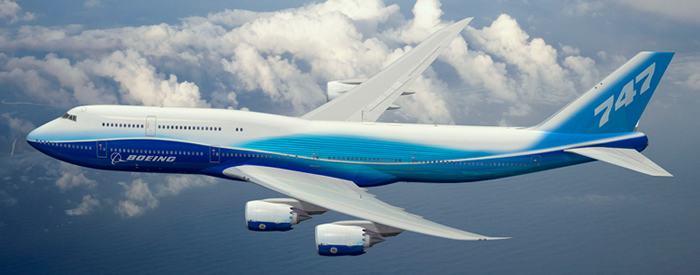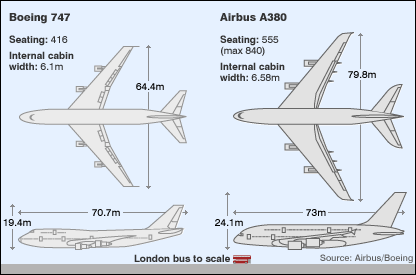BOEING 747 AIRCRAFT AIRLINER FACTS, DATES, PICTURES
AND HISTORY FOR ALL BOEING 747 VARIANTS
NEW BOEING 747-8 INTERCONTINENTAL
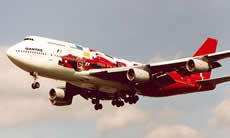 |
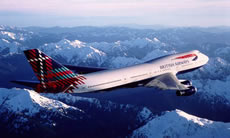 |
The Classic Boeing 747 Facts, Specs And Pictures...The Boeing 747, which is also known as the jumbo jet , is the second largest passenger airliner after the Airbus A380. Until the first commercial flight of the A380 in 2006, however, it no longer remains the largest passenger aircraft in commercial service.
The four-engine 747, produced by Boeing Commercial Airplanes, uses a two-deck configuration, the small upper deck is usually used for business-class passengers. A typical three-class layout accommodates about 400 passengers while a one-class layout accommodates a maximum of 600 passengers. The hump created by the upper deck has made the 747 a highly recognisable icon of air travel.
The 747 flies at high-subsonic speeds (typically 0.85 Mach or 565 mph or 909 km/h) and features intercontinental range (8,430 statute miles, or 13,570 km, for the 747-400 version), in some configurations sufficient to fly New York-Hong Kong (roughly a third of the globe) non-stop. In 1989 a Qantas 747-400 flew non-stop from London to Sydney, a distance of 11,185 miles, in 20hrs 9min: this was a delivery flight with no passengers or freight aboard. By May 2004 , a total of 1381 aircraft have been built or ordered in various 747 configurations, making it a profitable product for Boeing.
The 747 was born from the explosion of air travel in the 1960s. The era of commercial jet transportation, led by the enormous popularity of the Boeing 707, had revolutionised long distance travel and made possible the concept of the "global village." Boeing had already developed a study for a very large airplane while bidding on a US military contract for a huge airlifter. Boeing lost the contract to Lockheed 's C-5 Galaxy but came under pressure from its most loyal airline customer Pan Am to develop a giant passenger plane which would be over twice the size of the 707. In 1966 Boeing proposed a preliminary configuration for the airliner, to be called the 747. Pan Am ordered 25 of the initial -100 series. The design was a full length double decker, but due to issues with evacuation routes this idea was scrapped in favor of a wide-body design.
At the time, it was widely thought that the 747 would be replaced in the future with an SST ( supersonic transport ) design. Boeing took the shrewd move and designed the 747 so that it could easily be adapted to carry freight, knowing that when sales of the passenger version dried up, it could remain in production as a cargo aircraft. The cockpit was moved to a shortened upper deck so that a nose cone loading door could be included, creating the 747's distinctive "bulge." However, the supersonic transports such as Boeing's still-born SST and the Concorde never lived up to their promise, being too expensive to operate profitably at a time when fuel prices were soaring. The upper deck was initially used as a luxurious first-class lounge/bar area, but is now most often used for extra seating capacity. After being expected to wither on the vine with only 400 sales, the 747 outlived many of its critics and production passed the 1,000 mark in 1993. The expected slow-down in sales of the passenger version in favor of the cargo derivative has only happened in the early 2000s.
The development of the 747 was a huge undertaking. Boeing did not have a factory large enough to assemble the giant aircraft, so the company built an all-new assembly building near Everett, Washington. This factory is the largest building ever built. Pratt and Whitney developed a massive high-bypass turbofan engine, the JT9D , that was, in the beginning, exclusively for the 747. To appease concerns about the safety and flyability of such a massive aircraft, the 747 was designed with four backup hydraulic systems, split control surfaces, multiple structural redundancy, and sophisticated flaps which allow it to use standard-length runways. Initially, Boeing found that the 747 was being treated with skepticism by many airlines. At the time, Boeing's rivals, McDonnell Douglas and Lockheed, were working on wide-body three-engine "tri-jets", which were significantly smaller than the proposed 747. Many airlines wondered if the 747 would prove too large for an average long distance flight and instead invested in tri-jets. Furthermore, there was worry about whether the 747 would be compatible with existing airport infrastructure.
Another issue raised by the airlines was fuel efficiency. A three-engine airliner burns significantly less fuel per flight than a four-engine, and with airlines trying to lower costs, fuel efficiency was a large issue (this issue would return to haunt Boeing during the 1970s). Boeing had promised the 747 to Pan Am by 1970, so it had less than four years to develop, build and test the 747. Work progressed at such a breakneck pace that all those who worked on the development of the 747 were given the nickname "The Incredibles". The massive cost of developing the 747 and building the Everett factory meant that Boeing had gambled its very existence on the 747's success, and the company was nearly bankrupted in the early 1970s. The gamble paid off however, and Boeing enjoyed a monopoly on very large passenger transports that has only been broken 35 years later with the advent of the Airbus A380. The Boeing 747-8 Intercontinental and 747-8 Freighter are the new high-capacity 747s that offer airlines the lowest operating costs and best economics of any large passenger or freighter airplane.
The 747-400 incorporates major aerodynamic improvements over earlier 747 models, including the addition of winglets to reduce drag, new avionics, a new flight deck and the latest in-flight entertainment systems. And, the 747 continues to be the world's fastest subsonic jetliner, cruising at Mach .855 -- or 85.5 percent of the speed of sound. Along with the popular Boeing 777, the 747 is a key element of the Boeing long-range market strategy. With the lowest operating cost per ton-mile in the industry, the new-technology Boeing 747-400 Freighter is the all-cargo transport member of the 747-400 family. It can carry twice as much cargo, twice as far, as the competitor's leading freighter. Along with earlier versions, 747 Freighters -- about 225 in all -- carry half of all the world's freighter air cargo.
Boeing has taken another huge step in the continuing evolution of the world's most recognized jetliner, the 747. The 747-400ER Family -- available in both passenger and freighter versions -- provides the same size as current 747-400s, and offers an even more unbeatable combination of payload, range and speed.
Did you know the 747-400 wing measures 5,600 square feet (524.9 sq m), an area large enough to hold 45 medium-sized automobiles? |
Boeing 747 Variants and ConfigurationsThe 747-100 was the original variant launched in 1966. The 747-200 soon followed, with an order in 1968. The 747-300 was launched in 1980 and was followed in 1985 by the 747-400. Lastly, the 747-8 was announced in 2005. Several versions of each variant have been produced. Many of the early variants were in production simultaneously. 747-100
The first 747-100s were built with six upper-deck windows (three per side) to accommodate upstairs lounge areas. Later, as airlines began to use the upper-deck for premium passenger seating instead of lounge space, Boeing offered a 10-window upper deck as an option. Some -100s were retrofitted with the new configuration. No freighter version of this model was developed by Boeing. However, 747-100s have been converted to freighters. A total of 167 747-100s were built.
A 747-100B version, which has a stronger airframe and undercarriage design as well as an increased maximum takeoff weight (MTOW) of 750,000 lb (340,000 kg) was offered. The 747-100B was delivered only to Iran Air and Saudia (now Saudi Arabian Airlines). Optional engine models were offered by Rolls-Royce (RB211) and GE (CF6), but only Saudia ordered the Rolls-Royce option. A total of nine 747-100Bs were built. 747-100SR
Responding to requests from Japanese airlines, Boeing developed the 747-100SR as a "short range" variant of the 747-100. The SR has a lower fuel capacity but can carry more passengers, up to 498 in early versions and more than 550 in later models, because of increased economy class seating. The 747SR has a modified body structure to accommodate the added stress accumulated from a greater number of takeoffs and landings. The -100SR entered service with Japan Airlines (then Japan Air Lines) on October 7, 1973. Specifically, the SR has extra structural support at the wings, fuselage, and the landing gear along with a 20% reduction in fuel capacity. Later, short range versions of the -100B and the -300 were also developed. The SRs are used primarily on domestic flights in Japan. Two 747-100SRs were delivered to Japan Airlines with a stretched upper deck to accommodate more passengers. This modification is known as the "SUD" (stretched upper deck). A total of 29 747-100SRs were built. All Nippon Airways (ANA) operated 747-100SRs on domestic Japanese routes with 455 or 456 seats but retired the last aircraft on 10 March 2006. JAL operated the 747-100B/SR/SUD variant with 563 seats on domestic routes, and retired these planes in the third quarter of 2006. 747SP
The idea for the 747SP came from a joint request between Pan American World Airways and Iran Air who were looking for a high capacity airliner with enough range to cover Pan Am's New York–Middle Eastern routes and Iran Air's planned Tehran-New York route. The Tehran-New York route when launched was the longest non-stop commercial flight in the world. The 747SP is 48 feet 4 inches (14.73 m) shorter than the 747-100. Except for the planned 747-8, the SP is the only 747 with a fuselage of modified length. Fuselage sections were eliminated fore and aft of the wing, and the center section of the fuselage was redesigned. Single-slotted flaps replaced the complex triple-slotted Fowler flaps of the 100 series. The under-wing "canoes", which housed the flap mechanisms on full-size 747s, were eliminated entirely on the SP. The 747SP, compared to earlier variants, had a tapering of the aft upper fuselage into the empennage, a double-hinged rudder, and longer vertical and horizontal stabilizers. The 747SP was granted a supplemental certificate on 4 February 1976 and entered service with Pan Am, the launch customer and Iran Air, that same year. The aircraft was chosen by airlines wishing to serve major airports with short runways. A total of 45 747SPs were built. The 44th 747SP was delivered on August 30, 1982. Boeing re-opened the 747SP production line to build one last 747SP five years later in 1987 for an order by the United Arab Emirates government. In addition to airlines use, one 747SP was modified for NASA Dryden Flight Research Center's SOFIA experiment. 747-200 The 747-200 has more powerful engines, higher takeoff weights (MTOW) and range than the -100. A few early -200s retained the three-window configuration of the -100 on the upper deck, but most were built with a 10-window configuration on each side. Several versions in addition to the -200 were produced. The 747-200B is an improved version of the 747-200, with increased fuel capacity and more powerful engines; it first entered service in February 1971. The -200B aircraft has a full load range of about 6,857 nmi (12,700 km). The 747-200F is the freighter version of the -200 model. It could be fitted with or without a side cargo door. It has a capacity of 105 tons (95.3 tonnes) and an MTOW of up to 833,000 lb (378,000 kg). It entered first service in 1972 with Lufthansa. The 747-200C Convertible is a version that can be converted between a passenger and a freighter or used in mixed configurations.The seats are removable, and the model has a nose cargo door. The -200C could be fitted with an optional side cargo door on the main deck. The 747-200M is a combination version that has a side cargo door on the main deck and can carry freight in the rear section of the main deck. A removable partition on the main deck separates the cargo area at the rear from the passengers at the front. This model can carry up to 238 passengers in a 3-class configuration if cargo is carried on the main deck. The model is also known as the 747-200 Combi. As on the -100, a stretched upper deck (SUD) modification was later offered. A total of 10 converted 747-200s were operated by KLM. Union des Transports Aériens (UTA) also had two of these aircraft converted. A total of 393 of the 747-200 versions had been built when production ended in 1991. Of these, 225 were 747-200s, 73 were 747-200F, 13 were 747-200C, 78 were 747-200M, and 4 were military. Many 747-200s are still in operation, although most large carriers have retired them from their fleets and sold them to smaller operators. Large carriers have sped up fleet retirement following the September 11th attacks and the subsequent drop in demand for air travel, scrapping some or turning others into freighters. 747-300 The most visible difference between the -300 and previous models was a stretched upper deck with two new emergency exit doors and an optional flight-crew rest area immediately aft of the flight deck as standard. (The stretched upper deck had previously been offered as a retrofit and first appeared on two Japanese 747-100 SR models.) Compared to the -200, the upper deck is 23 feet 4 inches (7.11 m) longer than the -200. A new straight stairway to the upper deck instead of a spiral staircase is another difference between the -300 and earlier variants. The staircase creates room below and above for more seats. With minor aerodynamic changes, Boeing increased the cruise speed of the -300 to Mach 0.85 from Mach 0.84 on the -100/-200. The -300 features the same takeoff weight. Two of the three engine choices from the -200 were unchanged in the -300, but the General Electric CF6-80C2B1 was offered instead of the CF6-50E2 offered on the -200. The 747-300 name, which was proposed for a variant that was never launched, was revived for this new version, which was introduced in 1980. Swissair ordered the first 747-300 on 11 June 1980. The 747-300 first flew on 5 October 1982. Swissair was the first customer to accept delivery on March 23, 1983. In addition to the passenger version, other versions were available. The 747-300M has cargo capacity in the rear portion of the main deck similar to the -200M, but with the stretched upper deck it can carry more passengers.The 747-300SR is a short range version to meet the need for a high-capacity domestic model. Japan Airlines operated such aircraft with more than 600 seats on the Okinawa–Tokyo route and elsewhere. Boeing never launched a newly built freighter version of the 747-300, but it modified used passenger -300 models into freighters starting in 2000. A total of 81 aircraft were delivered, 56 for passenger use, 21 -300M and 4 -300SR versions. The 747-300 was soon superseded by the launch of the more advanced 747-400 in 1985, just two years after the -300 entered service. The last 747-300 was delivered in September 1990 to Sabena. Today, many -300 aircraft are still active, despite a significant loss of interest in the series among large carriers who replaced the 747-300 with the 747-400. Air France, Air India, Pakistan International Airlines and Qantas were some of the last major carriers to operate the 747-300. On 29 December 2008, Qantas flew its last scheduled 747-300 service, operating from Melbourne to Los Angeles via Auckland. On 20 January 2009, Qantas' last 747-300 was flown to the United States for storage. Although none were constructed as dedicated freighters, some -300s have been converted to cargo operations. 747-400 The 747-400 is an improved model with increased range. It has wing-tip extensions of 6 ft (1.8 m), winglets of 6 ft (1.8 m), which improve the 747-400's fuel efficiency by 4% compared to previous 747 versions. It has a new glass cockpit designed for a flight crew of two instead of three. The use of electronics reduced the number of dials, gauges and knobs from 971 to 365. It has tail fuel tanks, revised engines and a new interior. The longer range was used by some airlines to bypass traditional fuel stops, such as Anchorage. The -400 was offered in passenger (400), freighter (400F), combi (400C), domestic (400D), extended range passenger (400ER) and extended range freighter (400ERF) versions. The freighter version does not have an extended upper deck. The 747-400D was built for short range operations and does not include winglets, but these can be retrofitted. The passenger version first entered service in February 1989 with Northwest Airlines on the Minneapolis to Phoenix route. The combi version entered service in September 1989 with KLM. The freighter version entered service in November 1993 with Cargolux. The 747-400ERF entered service in October 2002 and the 747-400ER entered service the following month with Qantas, the only airline ever to order the passenger version. Some of the last built Boeing 747-400s were delivered with Dreamliner livery along with the modern interior from the Boeing 777. In January 2004 Boeing and Cathay Pacific launched the Boeing 747-400 Special Freighter program, later referred to as the Boeing Converted Freighter (BCF). The first 747-400BCF was redelivered in December 2005. The last passenger version of the 747-400 was delivered in April 2005 to China Airlines. Boeing announced in March 2007 that it had no plans to produce further passenger versions of the -400. However, orders for 36 -400F and -400ERF freighters were already in place at the time of the announcement. As of June 2009, 692 of the 747-400 series aircraft had been delivered with two aircraft (-400ERFs) to be delivered. At various times, the largest operator of the 747-400 has been Singapore Airlines, Japan Airlines, or British Airways. 747 LCF Dreamlifter
The 747-400 Dreamlifter (originally called the 747 Large Cargo Freighter or LCF) is a Boeing-designed modification of existing 747-400s to a larger configuration to ferry Boeing 787 sub-assemblies to the Boeing plant in Everett, Washington, for final assembly. Evergreen Aviation Technologies Corporation is completing modifications of 747-400s into Dreamlifters in Taiwan. The aircraft flew for the first time on September 9, 2006. The Dreamlifter's only intended purpose is to transport sub-assemblies for the Boeing 787.The aircraft is certified to carry only essential crew and not passengers. Three aircraft have been built, and one on order. 747-8
Boeing announced a new 747 variant, the 747-8 (referred to as the 747 Advanced prior to launch) on 14 November 2005. The variant will use the same engine and cockpit technology as the 787, hence the use of the "8". Plans call for the new design to be quieter, more economical and more environmentally friendly. The 747-8's fuselage was stretched from 232 to 251 feet (70.8 to 76.4 m). When the 747-8 enters service, it will surpass the Airbus A340-600 as the world's longest airliner.
The passenger version, dubbed 747-8 Intercontinental or 747-8I, will be able to carry up to 467 passengers in a 3-class configuration and fly more than 8,000 nmi (15,000 km) at Mach 0.855. As a derivative of the already common 747-400, the 747-8 has the economic benefit of similar training and interchangeable parts. The 747-8I is scheduled to enter service in 2010. Boeing 747-8 freighter
Also offered is the 747-8 Freighter or 747-8F, which derives from the 747-400ERF. The 747-8F can accommodate 154 tons (140 tonnes) of cargo. To aid loading and unloading, it features an overhead nose-door. It has 16 percent more payload capacity than the 747-400F and can hold seven additional standard air cargo containers. The 747-8F is scheduled to enter service in 2009.
Several units are under construction at Boeing's Everett facility. The 747-8 has received a total of 105 orders with 78 for the -8F and 27 for the -8I as of June 2009. Government, military and other variants * C-19 – The U.S. Air Force gave this designation to the 747-100s used by some U.S. airlines and modified for use in the Civil Reserve Airlift Fleet. Undeveloped 747 variants Boeing has studied a number of 747 variants that have not gone beyond the concept stage. During the 1970s, Boeing studied the development of a shorter body, three-engine 747 to compete with the smaller L-1011 TriStar and DC-10, which had lower trip costs than the 747SP. The 747-300 trijet would have had more payload, range and passenger capacity. The center engine would have been fitted in the tail with an S-duct intake similar to the L-1011's. However, engineering studies showed that a time-consuming and costly redesign of the 747 wing would be necessary. In the 1990s, the Boeing 777, a long range twinjet airliner smaller than the 747-400 entered service in the market where the 747-300 had been targeted. Boeing announced the 747-500X and -600X at the 1996 Farnborough Airshow. The proposed models would have combined the 747's fuselage with a new 251 ft (77 m) span wing derived from the 777. Other changes included adding more powerful engines and increasing the number of tires from two to four on the nose landing gear and from 16 to 20 on the main landing gear. The 747-500X concept featured an 18 ft (5.5 m) stretch to 250 ft (76.2 m) long, and the aircraft was to carry 462 passengers over a range up to 8,700 nautical miles (10,000 mi, 16,100 km), with a gross weight of over 1.0 Mlb (450 Mg). The 747-600X concept featured a greater stretch to 279 ft (85 m) with seating for 548 passengers, a range of up to 7,700 nmi (8,900 mi, 14,300 km), and a gross weight of 1.2 Mlb (540 Mg). A third study concept, the 747-700X, would have combined the wing of the 747-600X with a widened fuselage, allowing it to carry 650 passengers over the same range as a 747-400. The cost of the changes from previous 747 models, in particular the new wing for the 747-500X and -600X, was estimated to be more than $5 billion. Boeing was not able to attract enough interest to launch the aircraft. 747X and 747X Stretch As Airbus progressed with its A3XX study, Boeing in 2000 offered the market a 747 derivative as an alternative. This was a more modest proposal than the previous -500X and -600X that would retain the 747's overall wing design and add a segment at the root, increasing the span to 229 ft (69.8 m). Power would have been supplied by either the Engine Alliance GP7172 or the Rolls-Royce Trent 600, which were also proposed for the 767-400ERX.A new flight deck based on the 777's would be used. The 747X aircraft was to carry 430 passengers over ranges of up to 8,700 nmi (10,000 mi, 16,100 km). The 747X Stretch would be extended to 263 ft (80.2 m) long, allowing it to carry 500 passengers over ranges of up to 7,800 nmi (9,000 mi, 14,500 km). Both would feature an interior based on the 777's signature architecture. Freighter versions of the 747X and 747X Stretch were also studied. Like its predecessor, the 747X family was unable to garner enough interest to justify production, and it was shelved along with the 767-400ERX in March 2001, when Boeing announced the Sonic Cruiser concept. Though the 747X design was less costly than the 747-500X and -600X, it was criticized for not offering a sufficient advance from the existing 747-400. The 747X did not make it beyond the drawing board, but the 747-400X being developed concurrently moved into production to become the 747-400ER. 747-400XQLR After the end of the 747X program, Boeing continued to study improvements that could be made to the 747. The 747-400XQLR (Quiet Long Range) was meant to have an increased range of 7,980 nmi (9,200 mi, 14,800 km), with improvements to boost efficiency and reduce noise. Improvements studied included raked wingtips similar to those used on the 767-400ER and a sawtooth engine nacelle for noise reduction. Although the 747-400XQLR did not move to production, many of its features were used for the 747 Advanced, which has now been launched as the 747-8. |
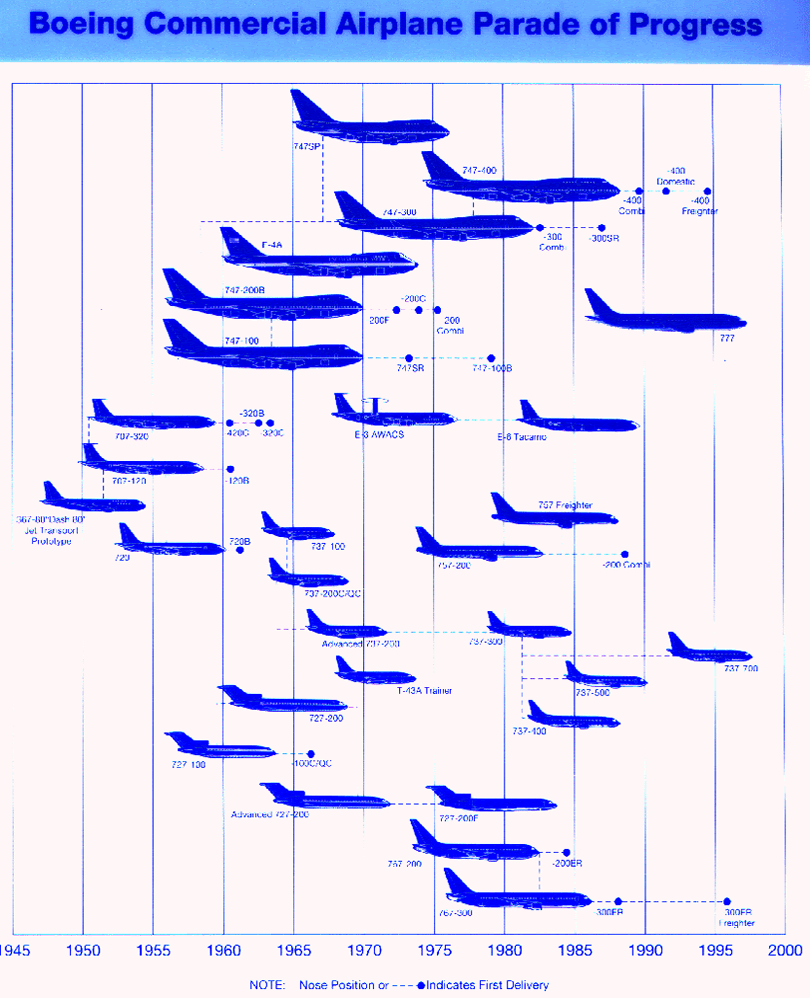
THE NEW BOEING 747-8 INTERCONTINENTAL The 747-8 Intercontinental and 747-8 Freighter use 787 technologies to significantly improve the economics and functionality of the 747-8 - all while improving fuel efficiency and reducing emissions and noise. New wing design, next generation GEnx engines, a modern flight deck and new materials are just some of the ways the new 747-8 benefits from the breakthrough technologies of the 787. |
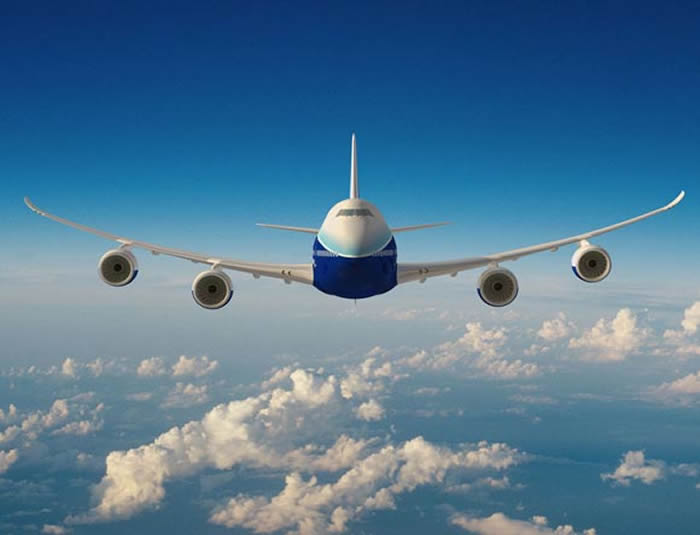 |
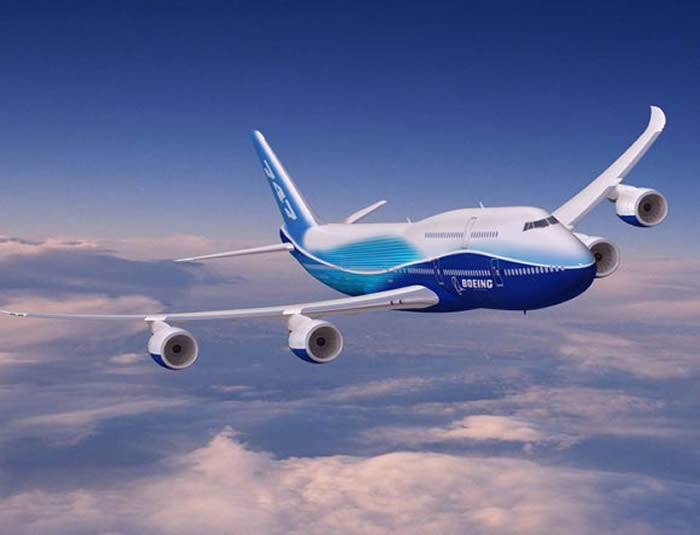 |
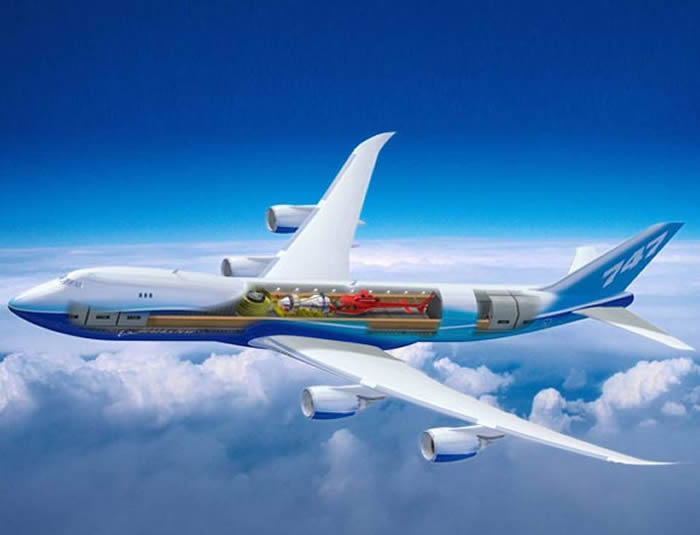 |
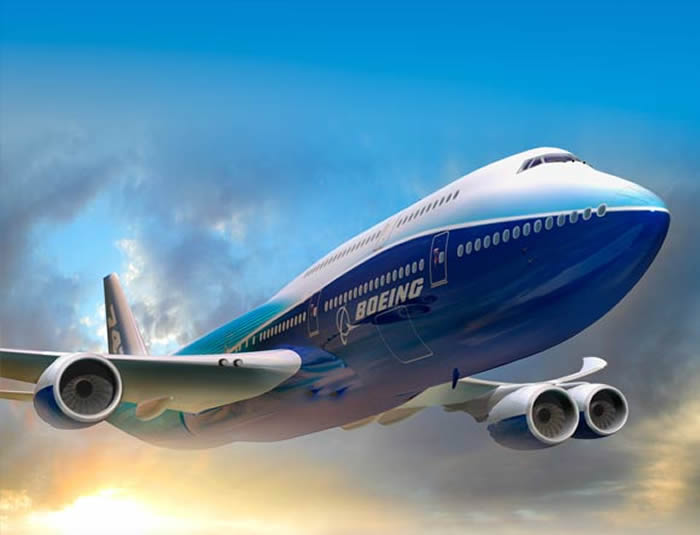 |
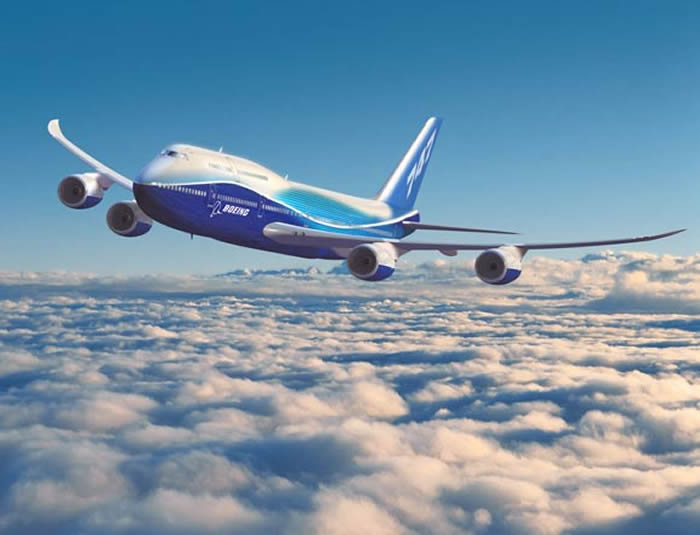 |
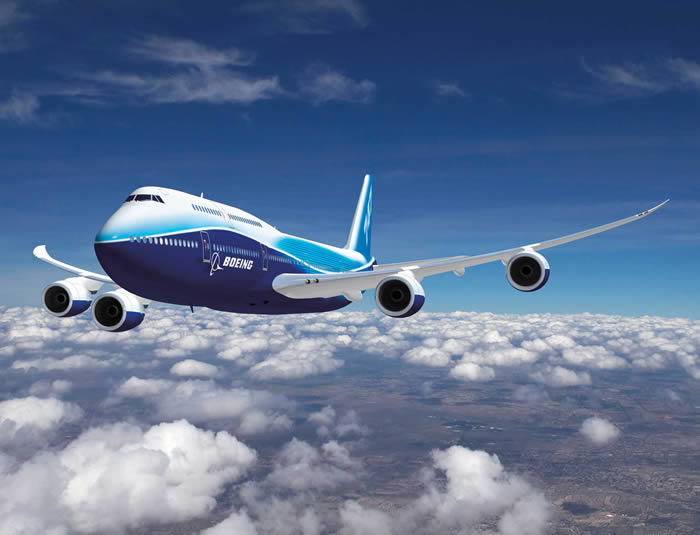 |
Boeing 747 Facts Parts A 747-400 has six million parts, half of which are fasteners. Wings The 747-400 wing weighs 95,000 pounds (43,090 kg), more than 30 times the weight of the first Boeing airplane, the 1916 B&W. Engineering and Testing Seventy-five thousand engineering drawings were used to produce the first 747. Flight The 747 fleet has logged more than 42 billion nautical miles (77.8 billion kilometers), equivalent to 101,500 trips from the Earth to the moon and back. Engines Engine thrust has grown from 43,500 pounds (19,730 kg) per engine on the early 747s to as much as 63,300 pounds (28,710 kg) on the current model. Fuel The 747-400ER can carry more than 63,500 gallons of fuel (240,370 L), making it possible to fly extremely long routes, such as Los Angeles to Melbourne, Australia. Interior The award-winning Boeing Signature Interior is available on both the 747-400 and 747-400ER. |
© AviationExplorer.com - The Website For Aviation Enthusiasts |





